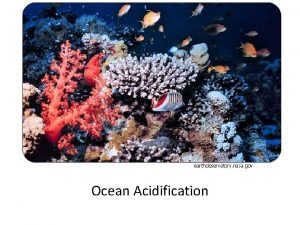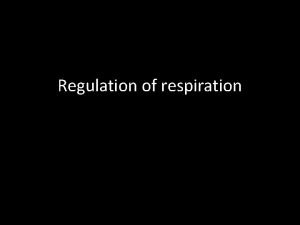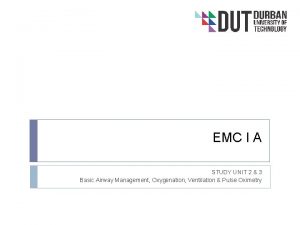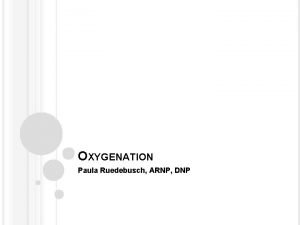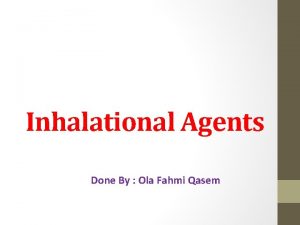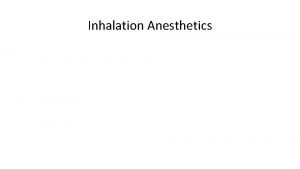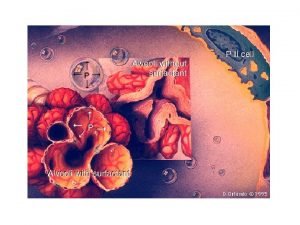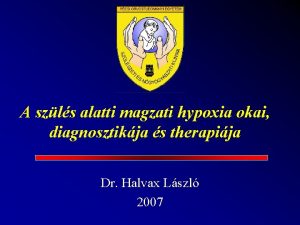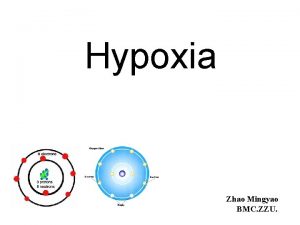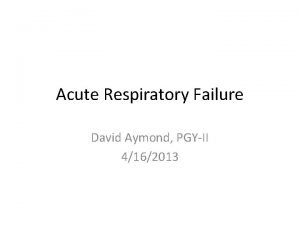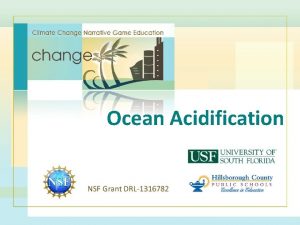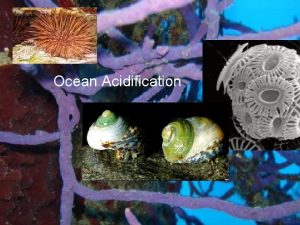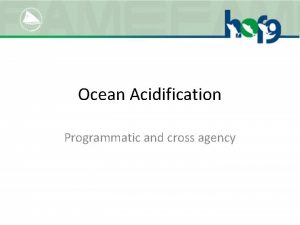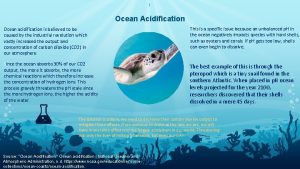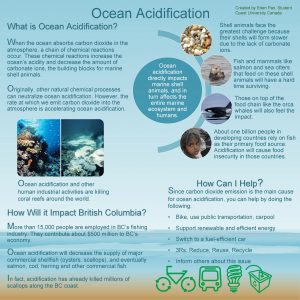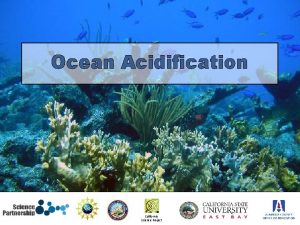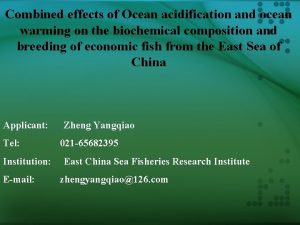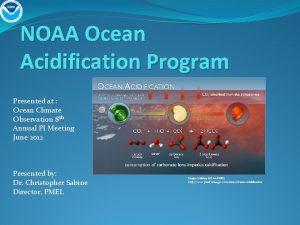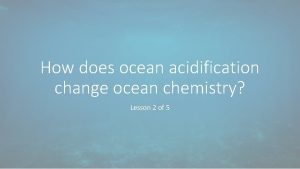Working Together to Tackle Ocean Acidification Hypoxia OAH














- Slides: 14

Working Together to Tackle Ocean Acidification & Hypoxia (OAH) in California Senate Natural Resources and Water Committee Oversight Hearing January 26, 2016 Catherine Kuhlman Executive Director, California Ocean Protection Council

I am here today because… ü OAH spans silos and is about building ocean health and planning for smart action ü Therefore, with the wrap up of the panel, we need cooperation that extends beyond California while considering the state’s interests and goals ü Through such state and regional efforts, we will advance conversations to manage OAH in a collaborative, effective way, and to elevate oceans in the climate conversation ü The West Coast and California can continue to be the leader on ocean action

The Pacific Coast Collaborative ü Brings together West Coast leaders as a common front on climate and energy challenges facing Pacific North America ü Identified ocean acidification as a key challenge for the West Coast in a 2013 letter to the President and the Canadian Prime Minister; asked for targeted action at all levels of government ü Has continued to identify acidification and hypoxia as urgent ocean health issues; paving the way for greater regional, cross -border, and national efforts to address these issues

A Shared Challenge: Building on the Statewide Efforts SINGLE STATE EFFORTS ALIGNING EFFORTS ACROSS WEST COAST ENGAGING NORTH AMERICAN PARTNERS Ocean Protection Council Ocean Science Trust WA Blue Ribbon Panel – MRAC OR Institute for Natural Resources Pacific Coast Collaborative West Coast OAH Science Panel NOAA US EPA CEQ Fisheries and Oceans Canada OPPORTUNITY TO INFORM: SINGLE STATE PRIORITIES LEGISLATURE OPPORTUNITY TO INFORM: WATER QUALITY NATURAL RESOURCES LEGISLATURE LAND USE/AIR QUALITY HIGH LEVEL POLICY

The Panel’s Executive Summary To be released publicly Spring 2016 ü 6 findings • Summarizing our State of Knowledge ü 8 recommendations • What should you do about it? ü 17 action items • Translating the recommendations into things you can do now ü Supported by 9 appendices • AND ü Distributed widely and posted on http: //westcoastoah. org

Decision-maker take aways from Panel Six Findings ü CO 2 IS THE PROBLEM Ocean acidification is related to globally elevated atmospheric CO 2. Both mitigation and adaptation are needed. ü ADAPT Resource managers must apply adaptation measures now to reduce and delay the effects of ocean acidification and protect ecosystems and our seafood supply. ü BUILD RESILIENCE Taking actions to support resilient ecosystems should be an underlying strategy. ü WORK TOGETHER The above actions will be most effective with a coordinated regional and national response. ü FOCUS ON MANAGEMENT RELEVANT SCIENCE Scientists and resource managers must accelerate the development and integration of knowledge required to improve management choices. ü THERE IS A COST TO INACTION.

The 8 Recommendations will… 1. Address local factors that can reduce OAH exposure 2. Enhance ability of biota to cope with OAH stress 3. Expand knowledge about OAH ü Many of these things are underway on the West Coast

1. Act locally to lessen OAH exposure ü Reduce local pollutant inputs that exacerbate OAH Inventory areas where local pollution inputs are likely to exacerbate OAH – Predictive models of OAH and local source contributions – Modified after Kelly et al. (2011) Science OPC has invested in a model, in partnership with NOAA, that investigates whether a noticeable improvement could be achieved by curbing pollution from coastal wastewater treatment plants, rivers and storm drains that have been shown to increase acidification. We can expand on such investments to better manage harmful OAH issues.

1. Act locally to lessen OAH exposure ü Promote approaches that remove CO 2 from water - Implement new pilot projects to evaluate which locations are optimal for removing CO 2 Leverage existing wetland eelgrass restoration projects to evaluate their effectiveness at CO 2 removal and to inform future planning strategies for CO 2 removal (carbon sequestration) How can we leverage existing restoration projects and surveying and monitoring efforts, for example in Humboldt Bay (at right) which holds the vast majority of the state’s eelgrass, to think through CO 2 removal approaches and their effectiveness?

2. Enhance ability of biota to cope with OAH stress ü Reduce other stressors on ecosystems - Manage fishery resources with an eye towards OAH is likely to influence fisheries production along the West Coast via impacts on fish behavior, impaired calcification of prey items, and fundamental changes in food webs. California’s OPC Science advisory team is beginning a focused work group around climate change and fisheries. The group will address: 1. Evaluating the effects of changing climate and ocean chemistry on fisheries 2. Managing risk and uncertainty; and 3. Understanding and promoting the adaptive capacity of fishing communities

3. Expand knowledge about OAH ü Local action now is important, but it is equally important that we set aside time and resources to continue to grow our knowledge in this young field, and respond quickly to the new knowledge. For example, this means: ü Aligning federal and state monitoring efforts, both locally and region wide ü Investing in relevant science and research Figure: Current inventory of state and federal OA monitoring assets (buoys, moorings and cruises) as of January 2016.

A Success Story In 2007 -08, millions of oyster larvae died in hatcheries in WA and OR CONTROL ACIDIFIED WA responded with the Blue Ribbon Panel on Ocean Acidification and legislation Shellfish industry and coastal communities are adapting

Today marks a critical starting point for California ü We need to consciously take these recommendations and make them actionable. ü This means we need a roadmap for implementing the recommendations and involving state agencies. ü This will ideally result in legislative guidance on transitioning from the recommendations to action.

Thank you ü It is a privilege to provide you the summary of our scientific knowledge, and how it relates to action. ü Acidification and hypoxia are the defining ocean issues for our generation. ü Today we have presented an initial game plan to buy time and to minimize the damage and losses from being as extensive as they would be without intervention. Keep in touch: Jenn Phillips jennifer. phillips@resources. ca. gov 14
 Ocean acidification
Ocean acidification Ocean acidification
Ocean acidification Type of hypoxia
Type of hypoxia Hypoximia
Hypoximia Intrapleural pressure vs intrapulmonary pressure
Intrapleural pressure vs intrapulmonary pressure Diffusion hypoxia slideshare
Diffusion hypoxia slideshare Baltic sea hypoxia
Baltic sea hypoxia Second gas effect
Second gas effect Decrd
Decrd Dr halvax lászló
Dr halvax lászló Hemoglobina
Hemoglobina Shunting vs vq mismatch
Shunting vs vq mismatch Convergent plate boundaries
Convergent plate boundaries Red ocean vs blue ocean
Red ocean vs blue ocean Chapter 15 ocean water and ocean life wordwise answer key
Chapter 15 ocean water and ocean life wordwise answer key

